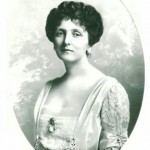Welcome to the Wakefield Doctrine (the theory of clarks, scotts and rogers)
Sure, it’s a great tool for self-improving oneself.
and…and! the Doctrine is without peer, an enhancement to the sublime art of people watching. (We know you like the thought of that, well, ’cause Outsider!)
New Readers? Sure We don’t spend a lot of time with stats or the ‘real’ world and such. But it should come as no surprise that conventional wisdom holds that in any given population, rogers represent an easy 66% scotts about 20% and clarks… yeah 13.
lol why yes, we enjoy the freedom of assumptions about the world around us. (Assumptions being the slutty half-sister of intellectual rigor, fun for a night, wouldn’t want to, like, start a family with), if you know what we mean.
Can’t repeat too many times: the Wakefield Doctrine is gender, age, culture neutral.
and before anyone jumps up and says, yeah! scotts will all shout and I know this woman at the supermarket who’s all busy and such; allow us to offer another reminder:
the Wakefield Doctrine is an additional perspective on the world around us and the people who make it up. It requires a person, (we’d say say adherent, but don’t want the rogers to get too excited too soon), who not only enjoys their imagination but are capable of treating reality as a variable, limited only by our intellectual rigor (and, of course the Laws of Gravity, inertia and a host of other qualities that the world imposes on us).
So read about the three personality types (aka predominant worldviews). Get a sense of characteristic responses to everyday situation by clarks and scotts and rogers. Most importantly, consider how you relate yourself to the world around you and the people who make it up. Remember, the Doctrine is not about them. It’s about how they relate themselves to the world around them.
ProTip: if you become certain that, despite what we say about only one predominant worldview, you are an exception and, in fact, some sort of hybrid clark–scott–roger? We’re still going to welcome you.
(Though, to be fair, and god knows some us wear Fair like a third grader’s first day of school starched shirt, we’ll be thinking, ‘Ok! one more towards our goal of 66%!’)










